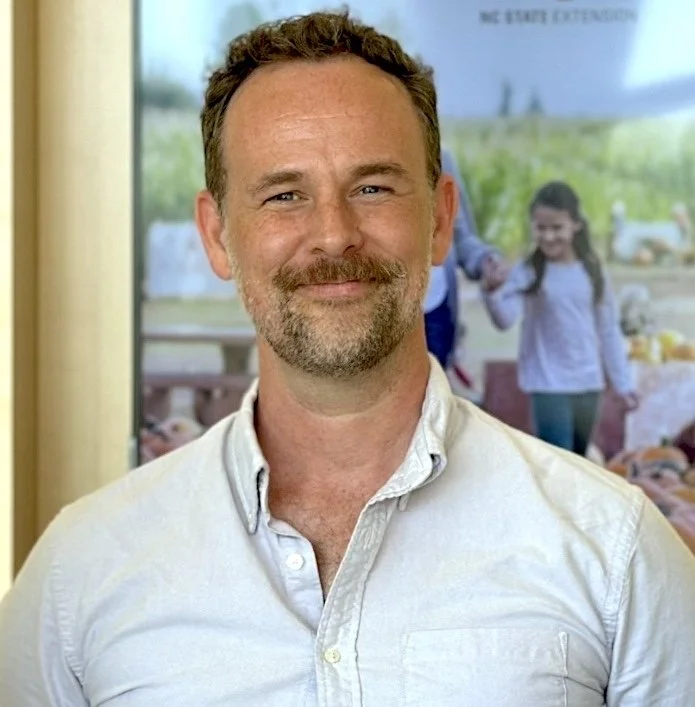
Preston Montague, Memory is a Hearth
Current
Memory is a Hearth is a living installation artwork by landscape architect and Dix Park Artist in Residence Preston Montague. The piece is composed of native grassland ecosystems planted in key locations across Dix Park, designed to evolve over time as dynamic, living sculptures. Each grassland is part ecological restoration, part public art, offering habitat for pollinators and wildlife while inviting recreation and reflection on the stories and cultures rooted in this landscape.
The title is inspired by the memories Montague’s mother shares with him about growing up on the grounds of Dorothea Dix Hospital. His mother—one of the few remaining individuals with a first-hand account of the people and events on the hospital grounds—tends to these memories as one might tend a hearth, keeping the fire alive. These plantings serve as an act of remembrance and as spaces of reconnection to land and history, while also offering growth for a new age.
Grasslands once covered this site, shaped by Indigenous stewardship and fire, and are themselves steeped in memory of deep organic soils, abundant animal species, and ancient cultural practices. With Memory is a Hearth, those historic ecosystems return not as replicas, but as future-facing, interactive spaces that reimagine what public landscapes can provide to a 21st century Biophilic City.
Three Places, One Story
Memory is a Hearth unfolds across three distinct sites within Dix Park. Each location was chosen for its unique environmental and symbolic significance—and each tells a different story.
Vestora
Vestora, the hearth-keeper, is a roughly two-acre constructed grassland ecosystem located at the former site of hospital staff cottages. Its ecology unfolds in two acts: an early successional composition of ruderal native plants that bloom quickly to prevent erosion and honor the memories of the physicians and staff who once lived there, followed by a longer-lived, bio-historical community of Raleigh-native species. These plants will grow around the now-removed cottages, revealing their footprints, which are maintained as small lawns for visitors to inhabit and reflect within.
A Wildening
Where Rocky Branch runs along Dix Park’s beloved Grove, steep hills long used for sledding—fondly remembered by the artist’s mother—rise above a natural floodplain that helps manage stormwater. To enhance this function, native grassland species adapted to wet soils will be planted, with a nurse crop of vibrantly blooming plants appearing first. Once established, pathways will be carved with mowers, transforming ecological restoration into a gesture of performance art that honors generations of sledders.
The Lamp
Perched on one of Dix Park’s most prominent points, with sweeping views of downtown Raleigh and NC State’s Memorial Belltower, a sliver of remnant grassland offers a rare glimpse into the Park's ecological past. Through invasive plant removal and the reintroduction of native species from seed, The Lamp restores historic biodiversity while symbolizing a lantern-bearer moving through the darkness of the invasive thicket that once choked the land and our collective path forward. Honoring those citizens who care for this precious place, The Lamp reflects a vision of stewardship, where city staff and community members illuminate a future that exists in deeper harmony with nature.
Each installation varies in scale, planting style, and visitor experience. One may feel immersive and wild; another sculptural and meditative. Together, they form a collective act of remembering through landscape.
Project Partners
Artist Statement
I was inspired by the idea of Dix Park as an archaeological site, with cultural and ecological stories buried in the soil, eager to be uncovered.
Historically, Dix Park was not completely forested but rather a mosaic of sprawling grasslands, shaped by American Indian stewardship, herbivores like bison, and both wild and cultivated fires. Today, the landscape at Dix Park reflects our cultural preferences for either lawn or forest, yet we face new ecological demands. Our conventional urban landscapes increasingly struggle to support the web of life on which we rely, including popular wildlife like butterflies and songbirds. Not to mention that often our cities do very little to use native plants to provide a collective identity or sense of place. As a former place of healing with a history of using the outdoors to improve health, Dix Park offers an opportunity to boost human and environmental health through increased biodiversity, which can also boost recreation and eco-tourism opportunities.
To connect these threads—cultural practices, ecological function, and public art—I chose historic Southeastern grasslands as both subject and medium. It enables me to draw from my background in art, horticulture, and landscape architecture to craft dynamic, living sculptures in four dimensions that reflect the site’s past while contributing to a bright, biophilic future. This project visualizes an origin story of Raleigh, grounding the residency’s first year in both beauty and purpose.
About Preston Montague
Preston Montague is a Durham-based landscape architect and artist whose work bridges the worlds of ecological restoration, botanical education, and classical art. With a background in painting, Montague brings a compositional eye to every landscape he touches—using plant form, color, and seasonality like brushstrokes on a canvas.
His practice is rooted in connection: to land, to history, and to the living systems that shape both. At Dix Park, Montague blends ancient land care traditions with contemporary ecological design to create immersive public works that invite curiosity, care, and belonging.









